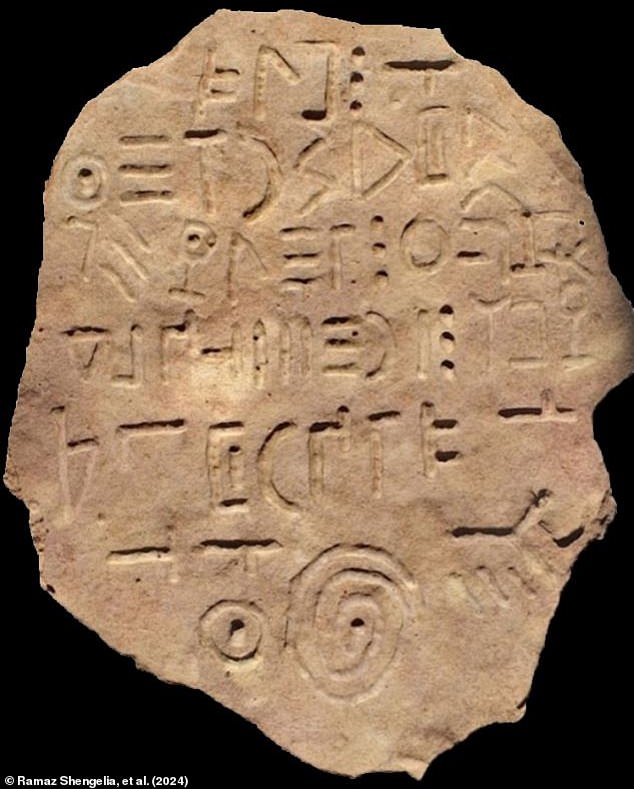Archaeologists have discovered a mysterious stone tablet containing traces of an ancient lost language.
The basalt slab was discovered by accident in 2021 by a group of local fishermen who spotted it in the silt of Lake Bashplemi, Georgia.
Carved into the surface are 60 characters arranged in seven rows, 39 of which are unique.
Archaeologists say these strange symbols are not found in any language known to science.
While there are similarities with scripts from India, Egypt and the western Iberian Peninsula, archaeologists say the Bashplemi inscription does not use any recorded language.
It has not been possible to chemically date the tablet but, depending on the area in which it was found, the carvings could be from the late Bronze Age or early Iron Age, around 14,000 years ago.
Researchers say there is no way to know what message the ancient writer was trying to convey, but they believe it may have been something important.
If some of the repeated figures are numbers, researchers suggest it could be a record of military loot, a major construction project or an offering to a deity.
Archaeologists have found an ancient stone tablet (pictured) containing a lost language completely unknown to science.
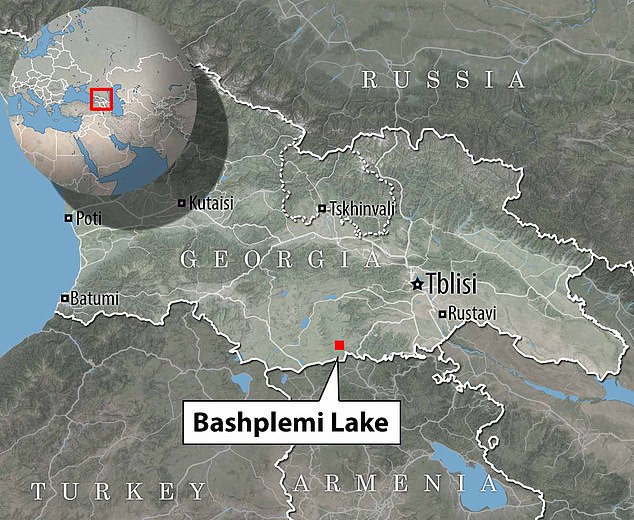
The tablet was discovered by chance in 2021, when a group of fishermen saw it buried in the silt of Lake Bashplemi, Georgia, during a particularly dry season.
The tablet’s 60 characters appear to have been created with a technique surprisingly “developed and refined” for the time of its creation.
An ancient writer would have first punched a series of notches to outline each symbol before smoothing the pattern with a rounded tool.
The result is a series of curved shapes, lines and points that are unlike anything seen before.
The closest symbols to those found on the Bashplemi tablet are found in Protokartvelian, an ancestor of modern Georgian spoken in the 4th millennium BC.
Likewise, some similar shapes are found on ancient seals used in pre-Christian Georgia during the Early Iron Age.
Archaeologists believe that these simple bone seals were probably used by officials such as tax collectors to mark quantities of wine and other goods.
Furthermore, in their article published in the Journal of Ancient History and Archaeology, the researchers note similarities with even more exotic writings.
They write: “In general, the Bashplemi inscription does not repeat any scripture that we know; However, most of the symbols used there resemble those found in the writings of the Middle East, as well as those of geographically remote countries such as India, Egypt, and the Western Iberian Peninsula.’
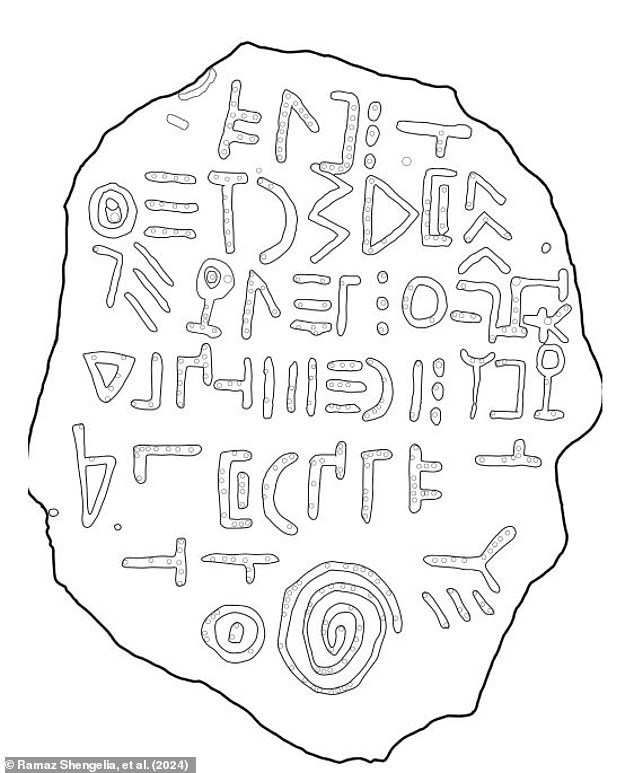
The tablet contains 60 characters, 39 of which are unique, arranged in seven rows. They were carved by drilling holes into the stone (shown by the small circles) before smoothing the shapes with a rounded tool.
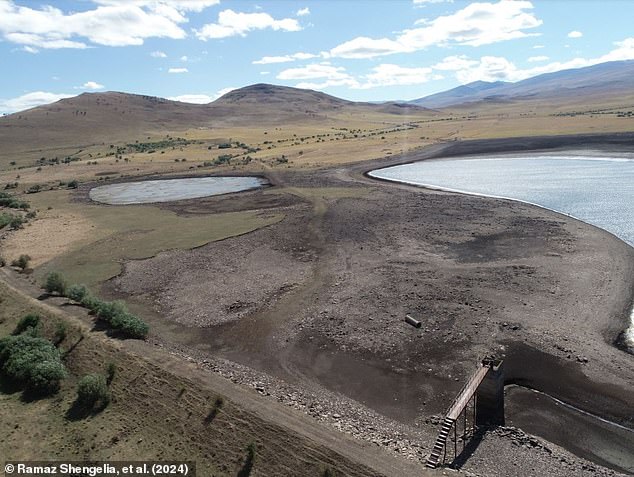
The tablet was buried in the silt of Lake Bashplemi, Georgia, which experts believe has been inhabited since at least the Early Bronze Age.
However, no ancient language contains a perfect match for any known language, making its origins a complete mystery.
The Mansi township where the tablet was found, in the historic Dbaniskhevi region, was once home to a thriving civilization dating back to the early Bronze Age.
Excavations have even found stone and obsidian tools for processing hides, suggesting a long period of settlement.
In the area around Lake Bashplemi, drone surveys have revealed sets of regular circles that could be burial mounds and geometric shapes that could be remains of houses, defense structures and places of worship.
Interestingly, researchers say there could be some connection to a lost language referenced in Greek mythology.
In the myth of Jason and the Argonauts, the legendary Captain Jason must travel to the land of Colchis to find the Golden Fleece.
While Colchis was often seen as a mythical land of riches, it was actually a real region bordering the Black Sea in what is now Georgia.
According to ancient Greek sources, the people of Colchis knew a way of writing called “Golden Writing.”
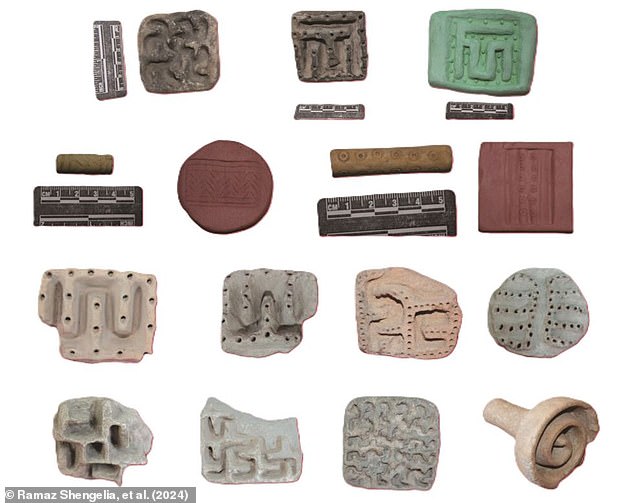
The most similar writing is that found on seals (pictured) used by officials in pre-Christian Georgia around the 4th millennium BC. The authors say this could connect the tablet to the lost language known as Colchian runes.
In 1115 AD. C., the Byzantine scholar Saint Eustathius of Thessalonica even wrote: “The purpose of the Argonautic expedition was to learn the method of golden writing.”
However, all traces of this ancient language, now known as Colchian runes, have been lost to time.
This is possibly because the original inhabitants of Colchis used organic writing materials, such as bone or wood, that have long since decomposed.
But researchers now suggest that the Bashplemi tablet could be somehow related to the runes of Colchis.
However, without further archaeological excavations in the area, there is no way to know for sure what the tablet says or who its creators were.
The researchers conclude: “Deciphering the inscription discovered in the historical Dbaniskhevi can become a very interesting and significant event and this can possibly change stereotypes about certain historical phenomena, as well as key aspects of the origin and development of writings in the Caucasus.”


